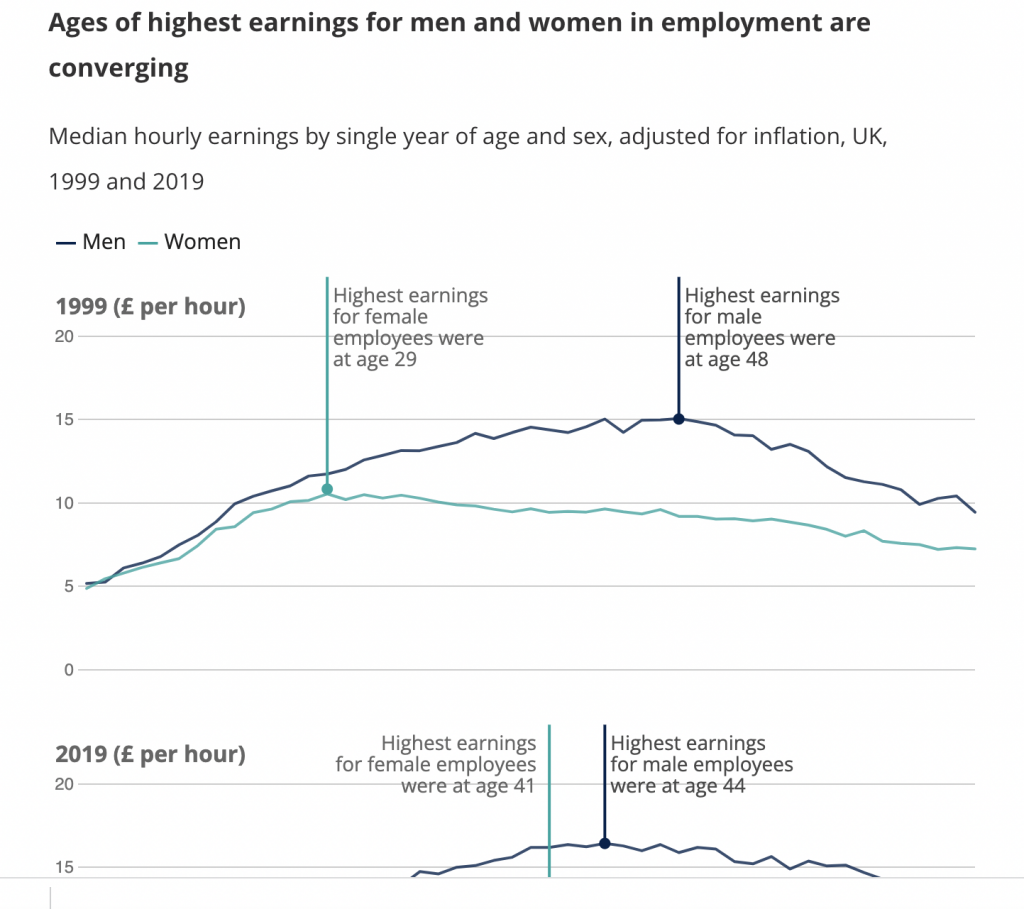Convergence on earnings – peak timings
One of the key themes in the Paula Principle is to scrutinise the notion of convergence between men and women’s career patterns. The PP is founded on the fact that women’s qualification levels have not only converged on men’s but long ago surpassed them – crossover rather than convergence. Meanwhile respective earnings have only slowly drifted close together, so the careers gap remains large. As a result the female/male competence gap is increasing faster than the male/female careers gap is closing. In anything other than a simplistic sense, convergence is not happening.
But this is not the key point. Talk of convergence has a dangerous tendency to reinforce the idea that the goal is for more women to be allowed to follow male career paths, and that this is the route to equality. As Avivah Wittenburg-Cox often argues in her admirable Elderberry blog, we should spend less time talking about how women should lean in/adapt etc, and more time on what we mean by equity and balance.
In the PP I argued for much more attention to be paid to ‘reverse convergence’ (not a beautiful label), ie how to enable more men to follow what traditionally appear as female career paths. Notably this would mean more men doing part-time work and pursuing interrupted career patterns. My contentious but realpolitik point was and is that it is only when significant numbers of men adopt them that such patterns will be properly valued and rewarded.
Be that as it may, I came across a couple of interesting findings in the ONS Milestones publication. (I’m finding this material v relevant for my current book, which is on ages and stages in the life course.) The first shows really significant shifts in the earnings peak of women and men. As you can see, at the turn of the century men’s earnings peaked at age 48; 20 years on this has dropped four years (to roughly the midpoint of the working life, as it happens). For women, by contrast, the peak has shifted in the other direction, and by a much larger amount, from age 29 to 41. This must reflect a drop in the numbers of women who in effect gave up their careers on having children. As a result the difference in peak earnings ages has dropped from 19 to 3 years.

That’s quite a shift, and it changes very significantly the differences in earnings trajectories. (NB usual reminder: the PP is not about earnings so much as careers.) I find this encouraging – a slight counterweight to my rather gloomy last blog, which dealt with the very sizeable gender pension gap. Once again, it shows the value of looking across the full life course when thinking about equity at work.
The second, related, finding is less surprising: the closing of the average age at which men and women leave the labour market. For men it was 63.2 in 1999 and is now 65.3; for women it was 60.8 and is now 64.3. That is driven by legislation to unify pension ages, so is quite predictable.
